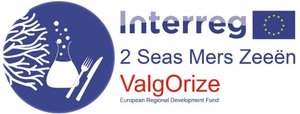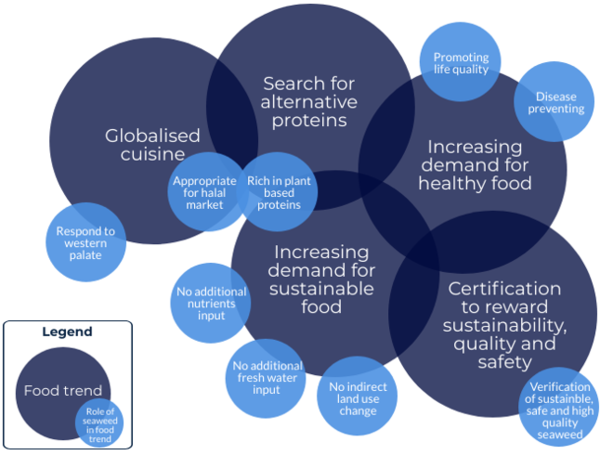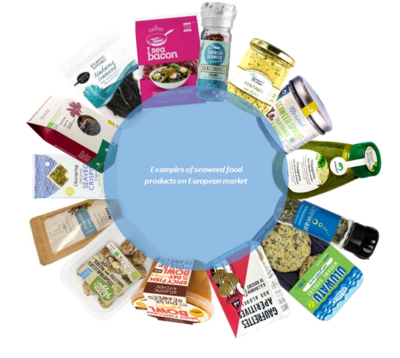European seaweed food market unfolded
2019-10-15
Algae will play a vital role in feeding the world by 2050. To enhance innovation in the algal sector, the European Interreg 2 seas project ValgOrize works on creating an interdisciplinary platform for a sustainable production and processing of high quality, stable, safe algae. Yet, production and processing are not the only important aspects: taste is just as important for selling and distributing algae. That’s why this project focuses on aspects including taste, aroma, colour and texture. A recent market study within this project unfolds the European seaweed food market.
The Valgorize project
The goal of the ValgOrize project is to increase the capacit y of seaweed entrepreneurs to produce reliable, consistent streams of high-quality algal biomass and to process it for food. In this way, the project aims at facilitating emergence and growth of a new sector within the food industry that produces food products sustainably from algae. The project will focus on increasing and integrating innovations, increasing insights into consumer acceptance of algae products and gaining insights into the investment needed to scale up algae production to commercial scale.
y of seaweed entrepreneurs to produce reliable, consistent streams of high-quality algal biomass and to process it for food. In this way, the project aims at facilitating emergence and growth of a new sector within the food industry that produces food products sustainably from algae. The project will focus on increasing and integrating innovations, increasing insights into consumer acceptance of algae products and gaining insights into the investment needed to scale up algae production to commercial scale.
New out: European market study
Within the project, Noordzeeboerderij Foundation is leading the study on valorisation to support and accelerate the development of a technically and commercially viable seaweed supply chain for food applications. With this study, we want to develop a roadmap towards sustainable production of algae for food applications. In order to achieve this, we studied the existing market, and we will study the market potential and the key success factors of the algae food market. So, how feasible algae foods in Europe? We are thrilled to share the first results about the current market for seaweed as food in Europe with you!
Food Trends & developments
The current food landscape is subject to several trends and developments. The trends and developments which are of importance for the European seaweed sector are highlighted in the figure below.

Supply of the seaweed food market
- European production of seaweed is approximately 1% of the global seaweed biomass supply in recent years.
- 99% of the European seaweed supply currently originates from wild harvest.
- Current European seaweed production is not fully satisfying the demand, seeing as the import of seaweed is more than triple the export. Investing in seaweed cultivation in Europe is seen as a sustainable solution to meet this high demand.
- A growing interest in seaweed cultivation has been observed, due to its benefits in comparison to conventional agricultural and the opportunities it offers for sustainable sector expansion.
- Although seaweed cultivation in Europe is still in its infancy, it is considered a key development which should be embraced and supported.
Characteristics of the current seaweed food market
- The use of seaweed for human consumption
 (including both seaweed as food and as a functional ingredient), makes up approximately 85% of the world market.
(including both seaweed as food and as a functional ingredient), makes up approximately 85% of the world market. - The European market for seaweed food products is growing annually by an estimated 7-10%.
- The current available European regulation for seaweed as food is insufficient. Therefore, new standards for algae and algae-based products are being developed.
- Seaweed is used in food products in 3 distinct ways: as meal component, as condiment and flavouring and as functional ingredient.
- Most used seaweed species in European seaweed food products are: Palmaria palmata (Dulse); Undaria pinnatifida (Wakame); Porphyra sp. (Nori); Ulva sp. (Sea lettuce); Himanthalia elongata (Sea spaghetti); Saccharina latissima (Royal kombu). These seaweed species can all be found in the North Sea.
Next steps
For the scope of this research, we focussed on certain aspects of the European food market. However, further research on topics that are underexposed in this research is needed, such as: seaweed as a functional ingredient, characteristics of the sensory profile of individual seaweed and how this fits the western palatability, nutritional properties of seaweed and potentially undesirable compounds. We also want to emphasize the importance of actively collecting new data through interviews and other sources to work towards improved market information on the current seaweed food market in Europe. That way, we can better estimate the growth potential of the identified existing, and possible new, seaweed food markets in Europe. Subsequently, we will research to what extent these seaweed food markets can be supplied with local cultivated seaweeds.
This market study is a good first step in exploring the market and potency of local cultivated seaweed. We will continue our research to encourage investment and enhance the development of a European algal value chain.
More info: https://www.interreg2seas.eu/nl/ValgOrize or https://www.noordzeeboerderij.nl/projecten/valgorize


